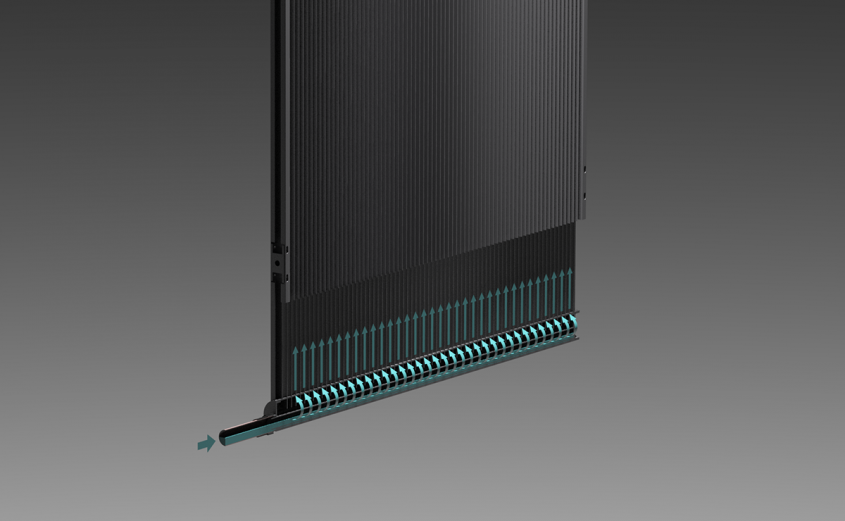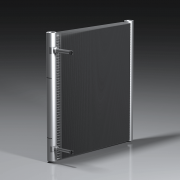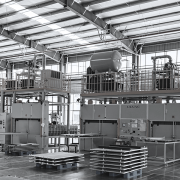Optimization of refrigerant distribution for microchannel evaporators
Microchannel heat exchangers have been broadly used in automotive applications due to their advantages of compactness, low weight, and high efficiency. There are numerous heat exchangers designs based on microchannel technology with folded fins and flat tubes which are connected to manifolds. These designs are predominantly used for automotive radiators, condensers, and, more recently, automotive air conditioning evaporators.
Howbeit attempts to apply the microchannel evaporators in HVAC applications have achieved limited success because of a number of product features, design objectives, and operating issues of HVAC applications that are significantly different and more diverse than automotive applications. Microchannel evaporators configured for automotive applications exhibit deficiencies when used in most HVAC applications.
Maldistribution of the refrigerant stream leads to reduced heat transfer effectiveness of typical microchannel evaporator and thus lower system efficiency and capacity. As opposed to condenser coils, refrigerant flow direction in microchannel evaporators is vertical – to ensure free drain-off behavior of condensate. Inlet and outlet manifolds located horizontally, with vertically-oriented microchannel tubes extending therebetween. Two-phase refrigerant flow enters the inlet manifold and segregates to gas and liquid flows, therefore making even distribution between microchannel tubes and ports difficult. Gravity effect makes this even more problematic. Superheated evaporator regions with low heat transfer rates are the result of such maldistribution. The typical performance loss is about 5 to 20 percent, and even more at partial evaporator loads.
It was investigated that uniformity of refrigerant flow distribution greatly affected by manifold construction and geometry. Field tests demonstrated significant improvement in refrigerant distribution caused by reducing the sectional area of the inlet manifold (55% increase in heat transfer rate) and even better distribution with reduced sectional areas of both inlet and outlet manifolds (about 70% increase in heat transfer rate). Manifold construction includes refrigerant distributor – a tube inserted into a manifold. The distributor is provided with orifices to dispense refrigerant flow between the microchannel tubes. Distributor dimensions and orifices diameter selected such that the ratio of the mass flow capacity of manifolds to the tubes flow capacity minimizes the maldistribution effect, uniformly feed the refrigerant among tubes, thereby improving the overall performance of heat exchanger.
Orifices diameter and quantity for inlet and outlet distributors shall be selected based on refrigerant properties, mass flow, evaporator size, and length-to-height aspect ratio. Certain fluids require larger or smaller orifices for the evaporator to operate the most efficient way. The same goes for the distributors’ diameters. Internal manifold geometry is also essential to achieve high evaporator efficiency: thorough analysis and extensive laboratory tests allowed us to choose an optimum design.
The refrigerant with a lower mass flow rate turns from two-phase flow into single-phase flow earlier, and its outlet temperatures are higher than those of higher mass flow rate. Boundaries between single-phase and the two-phase regions are identified by an infrared camera (Fig. 1). Heat transfer coefficients for low-flow tubes are also lower in comparison to those with the higher mass flow. The low-temperature regions correspond to the liquid flow regions, while high-temperature ones correspond to the gas flow regions.
Figure 1: Evaporator surface temperature distribution
Earlier microchannel evaporator designs featured distribution devices integrated only into inlet manifold, thus achieved limited improvement over traditional designs without refrigerant distributors. With the implementation of evaporator design that includes refrigerant distributors integrated into both inlet and outlet manifolds, Kaltra significantly improved the efficiency and capacity – both at full and partial loads – and achieved predictable performance and stable work of its microchannel evaporators over a wide range of operating conditions.
Evaporator coil design with integrated inlet and outlet refrigerant distributors also supports reversible operation, making these coils suitable for heat pump applications.
The simplicity of this design keeps the cost low, while performance improves dramatically compared to other evaporator constructions.








